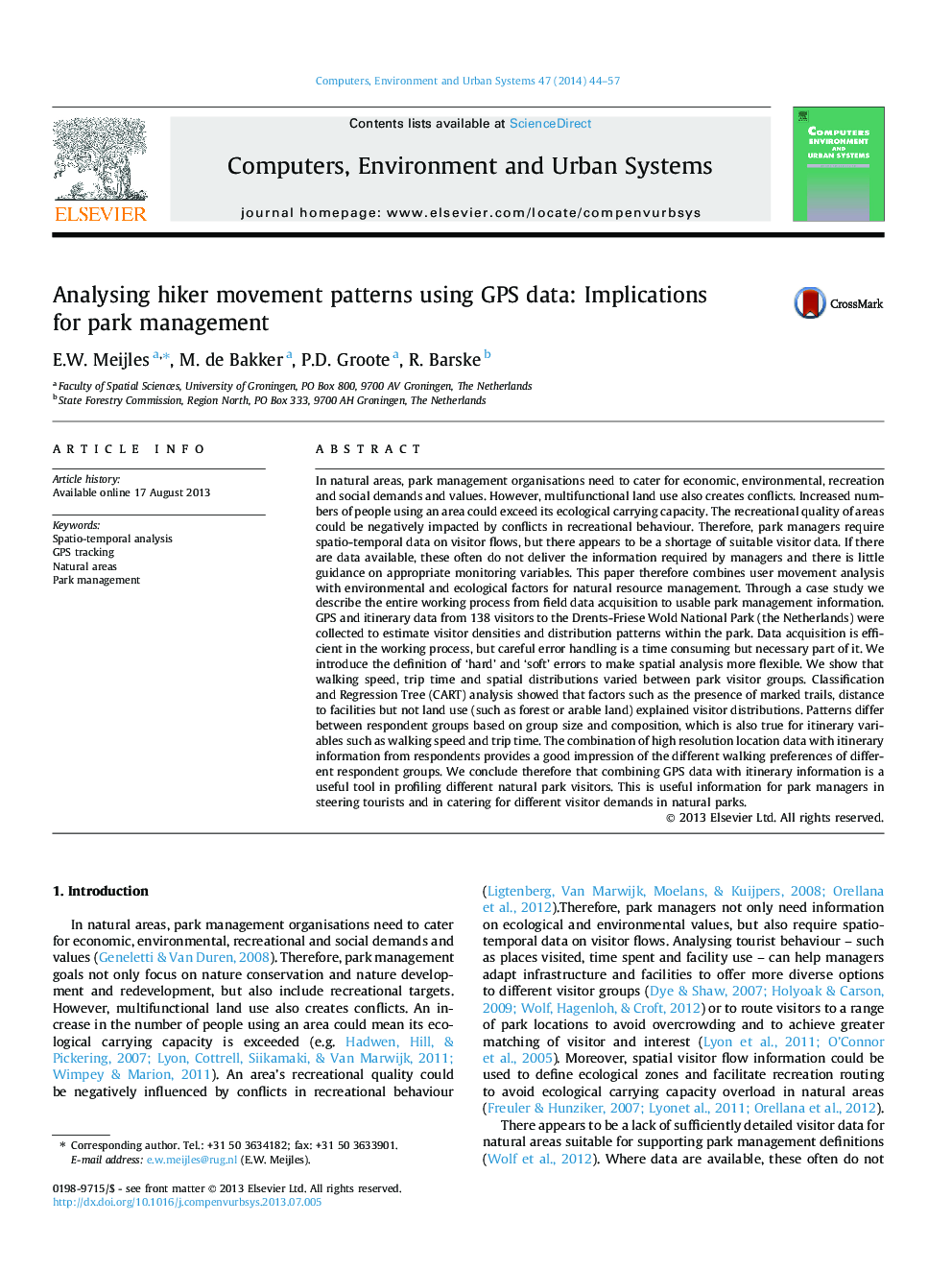| Article ID | Journal | Published Year | Pages | File Type |
|---|---|---|---|---|
| 506298 | Computers, Environment and Urban Systems | 2014 | 14 Pages |
•An interdisciplinary approach describing the working process from GPS data acquisition to nature management information.•GPS data acquisition is efficient, but error handling is time intensive.•Visitor densities are related to facilities and signposted trails, not to land use.•Combining spatio-temporal and qualitative visitor data enables profiling.
In natural areas, park management organisations need to cater for economic, environmental, recreation and social demands and values. However, multifunctional land use also creates conflicts. Increased numbers of people using an area could exceed its ecological carrying capacity. The recreational quality of areas could be negatively impacted by conflicts in recreational behaviour. Therefore, park managers require spatio-temporal data on visitor flows, but there appears to be a shortage of suitable visitor data. If there are data available, these often do not deliver the information required by managers and there is little guidance on appropriate monitoring variables. This paper therefore combines user movement analysis with environmental and ecological factors for natural resource management. Through a case study we describe the entire working process from field data acquisition to usable park management information. GPS and itinerary data from 138 visitors to the Drents-Friese Wold National Park (the Netherlands) were collected to estimate visitor densities and distribution patterns within the park. Data acquisition is efficient in the working process, but careful error handling is a time consuming but necessary part of it. We introduce the definition of ‘hard’ and ‘soft’ errors to make spatial analysis more flexible. We show that walking speed, trip time and spatial distributions varied between park visitor groups. Classification and Regression Tree (CART) analysis showed that factors such as the presence of marked trails, distance to facilities but not land use (such as forest or arable land) explained visitor distributions. Patterns differ between respondent groups based on group size and composition, which is also true for itinerary variables such as walking speed and trip time. The combination of high resolution location data with itinerary information from respondents provides a good impression of the different walking preferences of different respondent groups. We conclude therefore that combining GPS data with itinerary information is a useful tool in profiling different natural park visitors. This is useful information for park managers in steering tourists and in catering for different visitor demands in natural parks.
